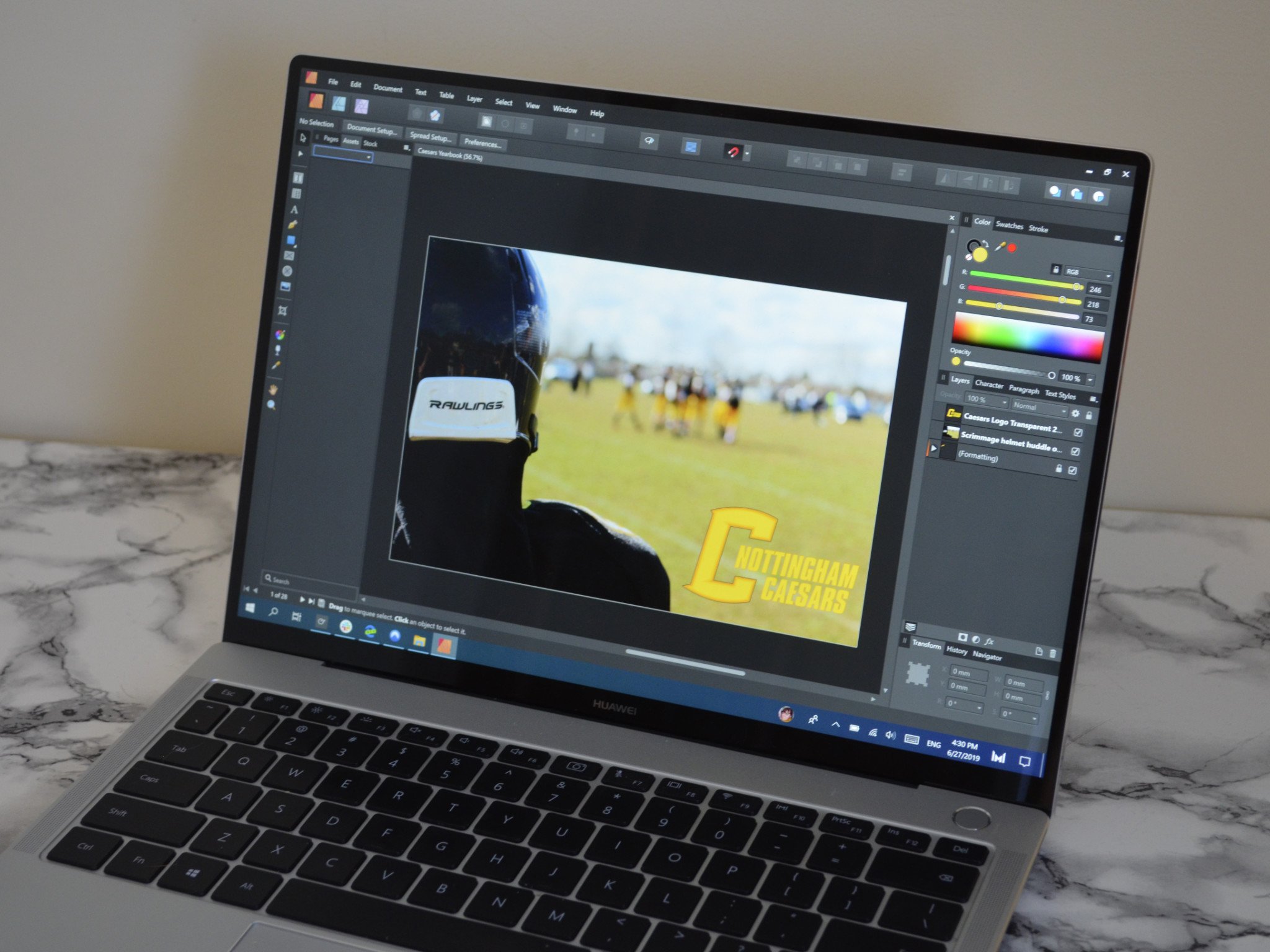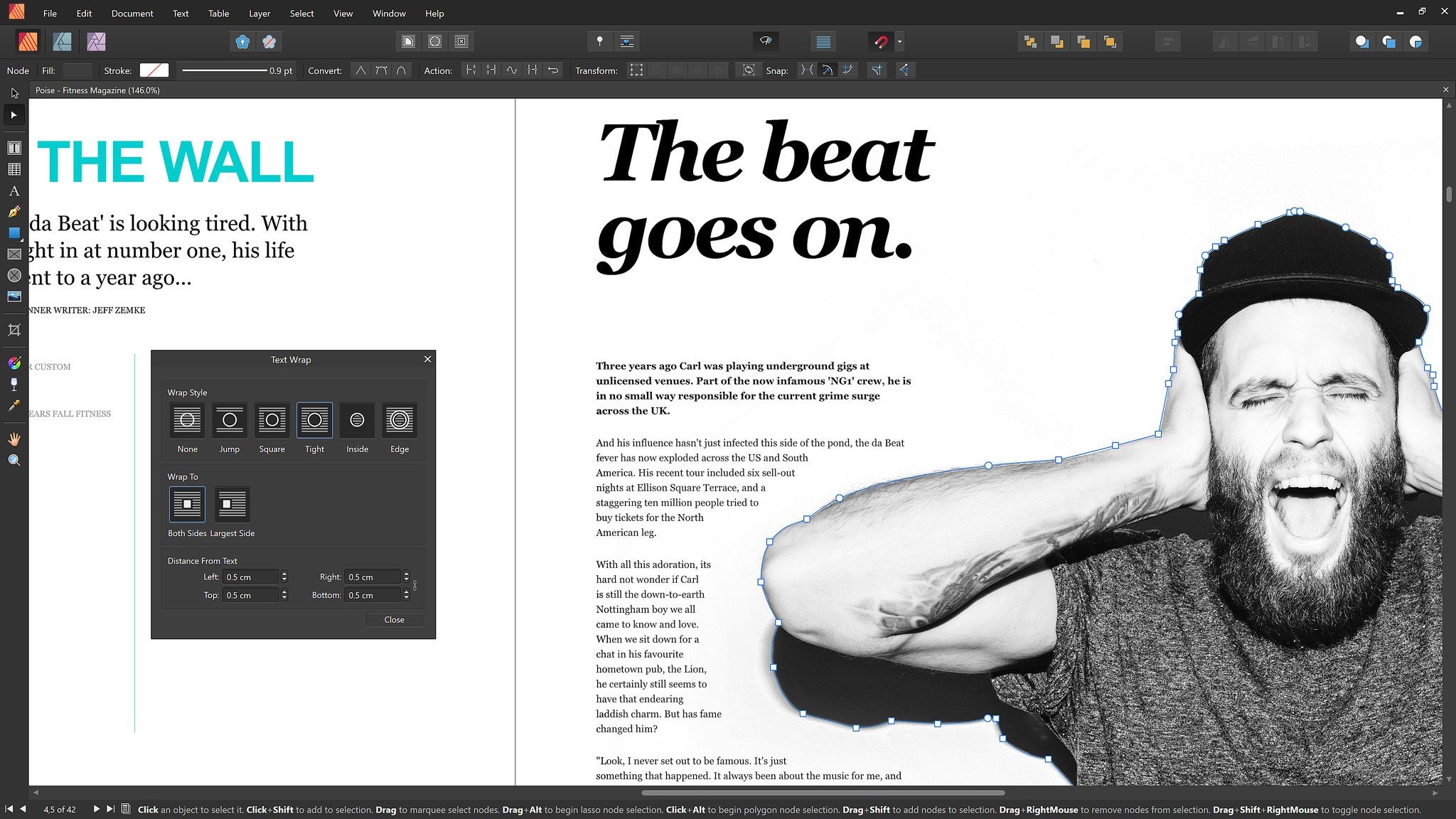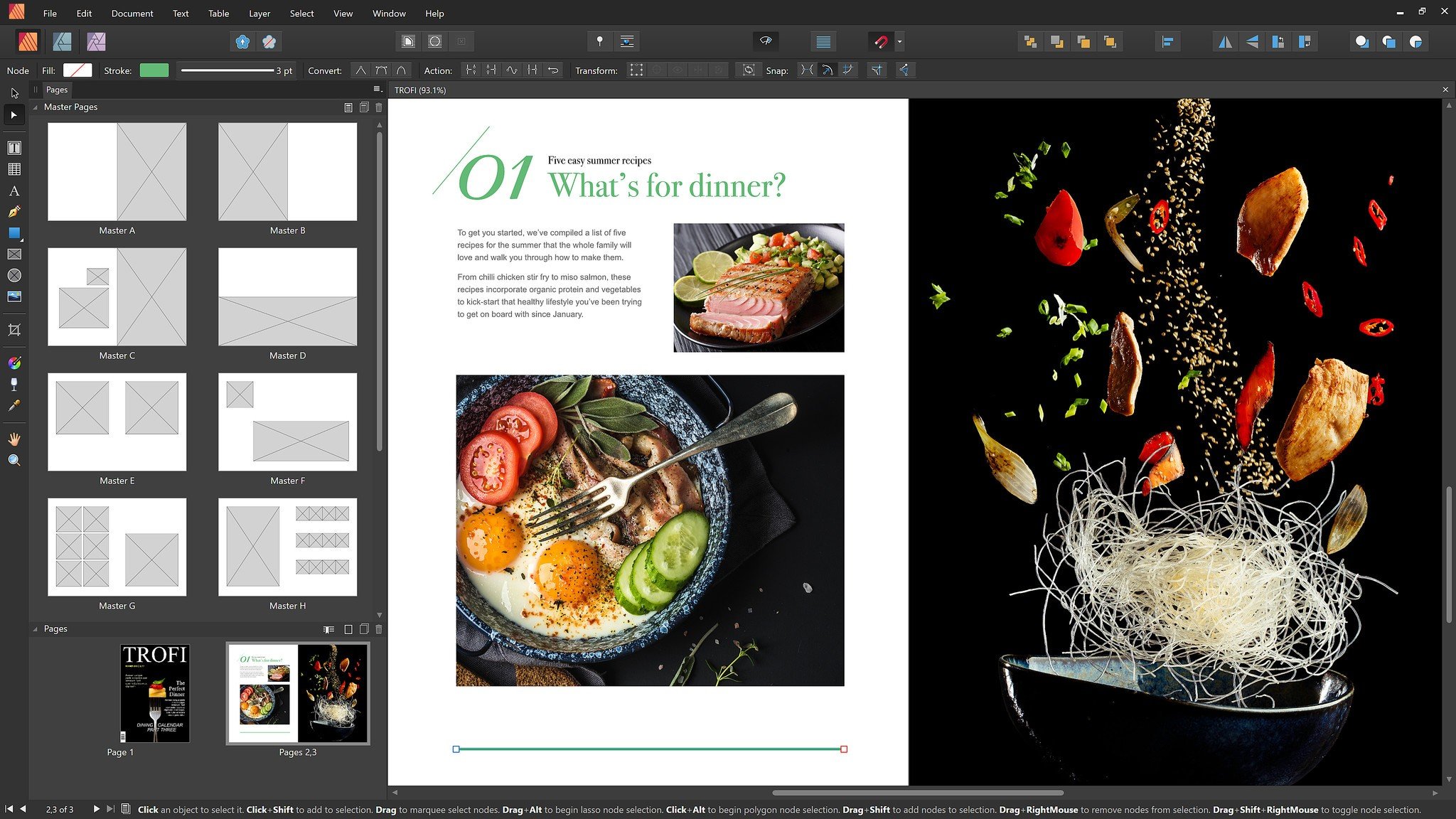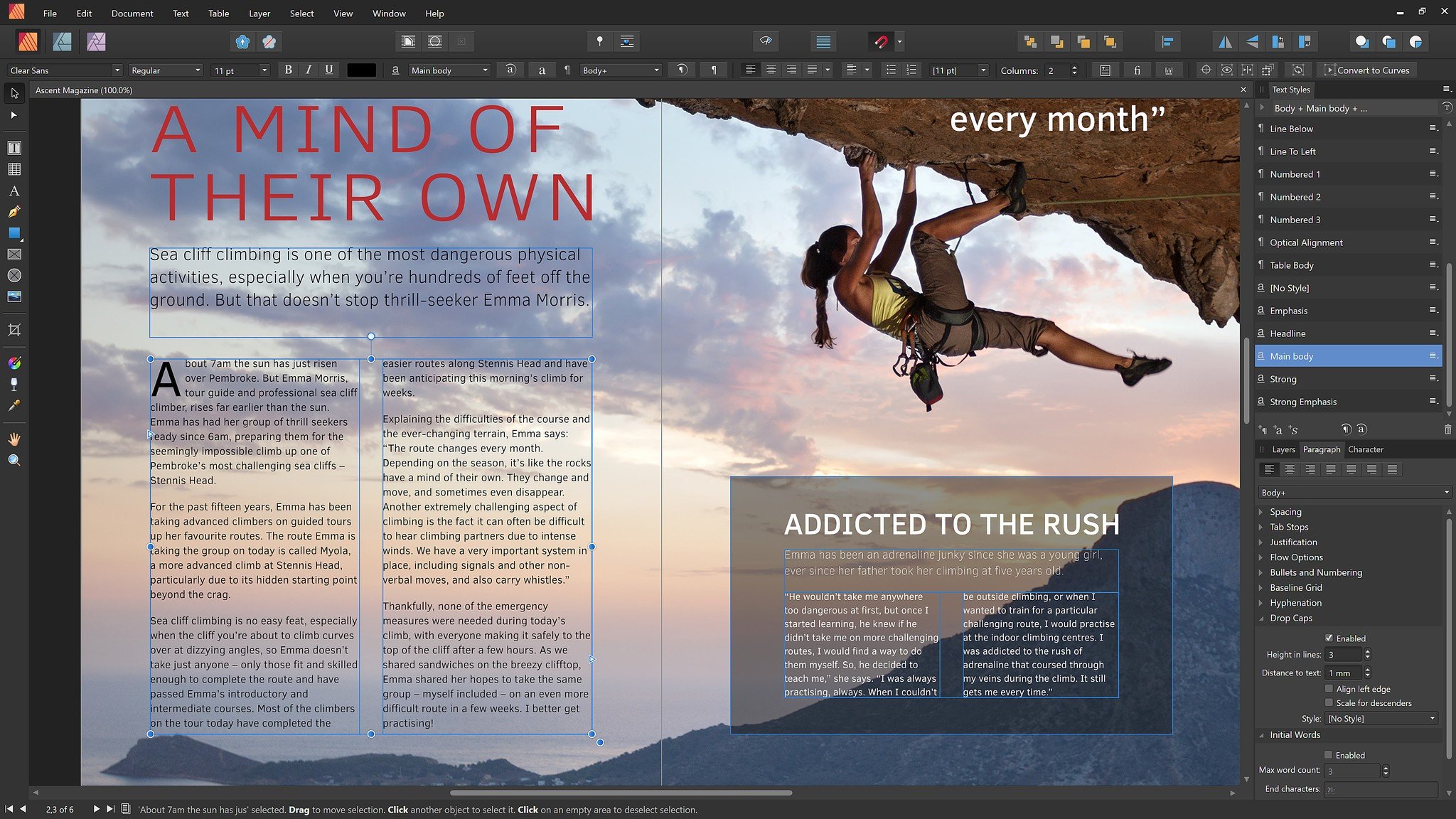Affinity Publisher review: Pro-grade publishing software, minus the subscription
Affinity Publisher is impressive publication software and has incredible integration with the Affinity suite.

Affinity Publisher is the third major piece of software in the Affinity suite from Serif. It follows Affinity Photo and Affinity Designer and builds off of their strengths. It's an impressive piece of dedicated publishing software which can be used for designing magezines, books, programs, and many other items that you'd print or publish. It integrates with the Affinity suite seamlessly thanks to its StudioLink technology. While Affinity Publisher has the feature set and power for professional publishers, many will shy away from it due to its lack of support for InDesign files.

$50Bottom line: Affinity Publisher is a powerful and intuitive publication application. If you also have Affinity Photo or Affinity Designer, it seamlessly integrates to create an all-in-one publishing experience.
Pros
- Lot of publishing power.
- Seamlessly integrates with Affinity Photo and Affinity Designer.
- Doesn't require subscription.
Cons
- Doesn't support InDesign Document (INDD) files.
- Doesn't support InDesign Markup Language (IDML) files.
What you'll love about Affinity Publisher

There are two ways to look at Affinity Publisher: as a standalone publication app; and as an integrated part of the Affinity suite through its new StudioLink technology. By both of these measures, Affinity Publisher is an impressive application with enough power to handle the vast majority of publishing needs.
As a standalone app, Affinity Publisher is powerful, full featured, and it shares many design choices and features with the rest of the Affinity suite. For example, you can undo hundreds of steps and save files with history so someone else can jump into any point of an edit. The interface is extremely similar to Affinity Photo and Affinity Designer, but if you haven't used those before it will feel familiar to anyone who has used Adobe Photoshop, Illustrator, or InDesign.
When it comes to publishing, it has a long feature list that you can read on Serif's website, but all the core features are there. The app supports master pages, image frames, text wrapping, linking text frames, grids, tables, and a long list of graphic and editing tools. I was in the beta for Affinity Publisher for months before its release and have also tested it since its release. It handled my publishing needs well and performed smoothly.
While Affinity Publisher can be used as a standalone app, its flagship feature is StudioLink, which allows it to integrate with Affinity Photo and Affinity Designer seamlessly. If you have all three programs on the same PC, you can tap the Photo or Designer studio icon to use all of the respective app's features directly within Affinity Publisher. As an example, if I made a program for the football team I coach, I could use the Photo studio to select a player and isolate him from the background, edit his image, and use effects to get the look I want. Then, I could drag him around a page of text and have text wrap around him to get the exact layout I want. I could then finish up that graphic by using the Designer studio to create text on a path. I can do all of those steps without having to hop in and out of separate photo editing and vector apps.
One of the best things about Affinity Publisher is that it doesn't require a subscription. It costs $50, or $40 if you grab it on sale, and that's it. Compare that to Adobe InDesign, which costs $21 per month, and the price difference is massive if you use the product for just a few months. Even if you purchased the entire Affinity suite for $150, that's still less than a year of an Adobe subscription that would include similar programs.
What you'll dislike about Affinity Publisher

Despite all of the features and the excellent StudioLink integration, many professionals will never use Affinity Publisher and never could. That's because Affinity Publisher doesn't support (InDesign Document) INDD files. It also doesn't support InDesign Markup Language (IDML) files, though Serif states support for IDML will come at some point.
All the latest news, reviews, and guides for Windows and Xbox diehards.
Professionals in the publishing industry often have to use INDD files because the client they're working with requires them or a company has built their entire set of templates using InDesign. Not being able to use these files will make Affinity Publisher a non-starter for some businesses and users. You can import a PDF into Affinity Publisher, and Affinity Publisher supports quite a few file formats, but things like text-frame linking aren't going to transfer when copied over that way.
IDML file support will help, if it arrives, because these files are often used by companies to work across different versions of Adobe software, but not supporting INDD files will hurt Affinity Publisher. Adobe has a monopoly on the publishing industry and uses a file format that isn't open, so the lack of support for these formats is a factor.
Should you buy Affinity Publisher?

If you want to create anything from website mockups to magazines, Affinity Publisher is an excellent tool. It has a clean interface, enough power to handle complex jobs, and has an impressive feature list. Its integration with StudioLink is one of the most impressive things Serif has ever released. It allows you to edit photos, vector art, and publication pages within the same app.
If you work in an industry in which Adobe file support is essential, Affinity Publisher probably isn't for you. But if you don't need Adobe file support or you own or run a business that is considering switching away from Adobe, Affinity Publisher is a professional-grade all-in-one publication tool that doesn't require a subscription.

A powerful publishing application that doesn't require a subscription
$50 at Microsoft StoreAffinity Publisher is a powerful and intuitive publication app. If you also have Affinity Photo or Affinity Designer, it seamlessly integrates to create an all-in-one publishing experience.

Sean Endicott is a news writer and apps editor for Windows Central with 11+ years of experience. A Nottingham Trent journalism graduate, Sean has covered the industry’s arc from the Lumia era to the launch of Windows 11 and generative AI. Having started at Thrifter, he uses his expertise in price tracking to help readers find genuine hardware value.
Beyond tech news, Sean is a UK sports media pioneer. In 2017, he became one of the first to stream via smartphone and is an expert in AP Capture systems. A tech-forward coach, he was named 2024 BAFA Youth Coach of the Year. He is focused on using technology—from AI to Clipchamp—to gain a practical edge.
